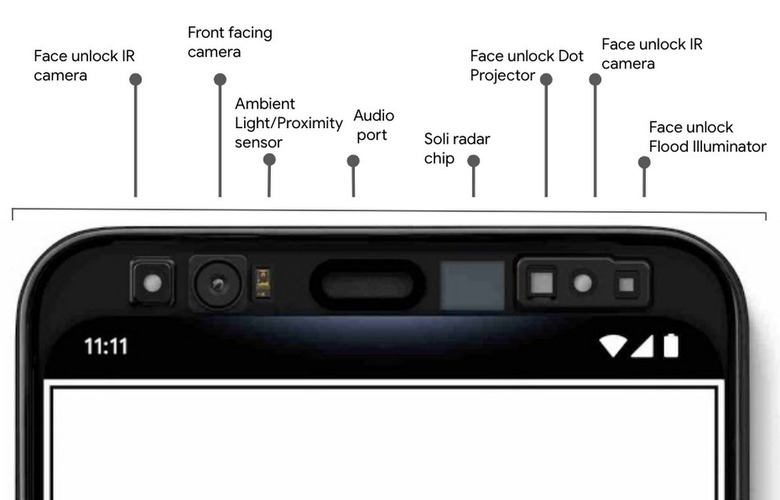Pixel 4 face unlock vs iPhone Face ID will be 2019's security showdown
Apple may have delivered super-secure face unlock with Face ID on the iPhone first, but it seems Google is aiming to best it on performance when the Pixel 4 launches. The 2019 Android flagship isn't expected to make its official debut until October, but Google can't stop preempting the announcement with feature confirmations amid the leaks.
Today it's the turn of face unlock on the Pixel 4 to get some time in the spotlight. Whereas the Pixel 3 had a fingerprint sensor on the rear, its successor does away with that. Instead, we're expecting the new phone to look solely to facial recognition for security.
Face vs Finger
That's not a bad idea. The ergonomics of accommodating a fingerprint sensor inherently involve compromise, after all. Put it on the front, and you need thicker screen bezels; put it on the back, and users have to try to locate it with their fingertip by muscle-memory, plus you can't readily access it when the phone is flat on a table. In-screen fingerprint scanners are yet to deliver the performance of regular ones, and side-mounted sensors come with their own usability problems too.
The big question many will have is how the Pixel 4's face unlock will hold up to Face ID on the iPhone. Apple's system still has some critics, but generally its combination of usability and security is praised. The fact that it can be used for authenticating apps and payments – unlike most face recognition systems on Android devices so far – is another huge advantage.
Google, though, has some tricks up its sleeve. For a start, as confirmed today, the Pixel 4 will see the first implementation of the Google Soli sensor, the compact radar that the ATAP team has been working on for five years. That monitors the space in front of the phone, tracking movement.
The Pixel 4 will use it for gesture control – skipping tracks by waving your hand, for example – but arguably more important will be how Soli is integrated into face unlock. With an iPhone, the Face ID system wakes up and starts looking for your unique facial fingerprint either when you pick the handset up, or when you tap the screen. Google, though, will use Soli to scan the area in front of the Pixel 4 even when the screen is powered off. That way, it can spot when you're reaching for the phone and turn on the face unlock system even before you've grabbed it.
The Pixel 4 will know when you're reaching for it
The promise is more speed: a face unlock system that works as you're lifting the Pixel 4, rather than having to hold it up, pause, and then get on with whatever apps you were planning to access. Google's face unlock system may not just be faster than Face ID, though, it could also be more efficient.

The Pixel 4 doesn't have a screen notch: its entire upper bezel is jam-packed with sensors. That may not look as clean as, say, an iPhone's bezel, but it does allow Google to fit in more technology. An iPhone XS has a flood illuminator – which projects a 3D grid of dots onto your face – and a single infrared camera for Face ID. Problem is, that can only recognize you when you're holding the iPhone the correct way up.
Apple addressed that with the iPad Pro with Face ID late last year, which can recognize users no matter the orientation at which the tablet is being held. That technology hasn't made it to its smartphones yet. Google, though, is promising recognition from any angle, and has fitted not one but two IR cameras along with the flood illuminator. Here's hoping the iPhone 11 expected to launch in September learns from Face ID on the iPad Pro.
Security isn't sexy, but it's hugely important
While cameras, screen technology, and performance are the obvious elements that get users excited by a new phone, security is just as important – or maybe even more so. The Pixel 4 checks off some of the key boxes there: face unlock data is stored on the phone alone, in its Titan M security chip, and neither facial scans nor Soli data will be transferred to the cloud or shared with other Google services.
Those provisions pave the way to using face unlock for secure payments and app authentication, something we're hoping Android handsets in general adopt. Google's phones have always been partly about shaping expectations from other device-makers, and this implementation on the Pixel 4 seems a heavy-handed hint to manufacturers as to what users should be able to expect from their devices. That's good news all round.
